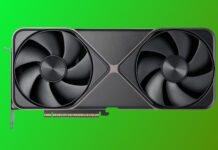Qualcomm is one of the major players when it comes to ARM based system processors, and it has the largest share of the smartphone market. Its new Krait architecture has impressed in early tests, but now that Windows 8 is coming there is an important piece missing.
Qualcomm Snapdragon S4 has a processor architecture that can be considered the best on the ARM market, and also has a graphics processor among the fastest. With Adreno 305 and 320 Qualcomm will raise the bar even further, but gaming performance is not everything and it looks like a key component for Windows 8 is missing.
Qualcomm acquired AMD’s assets for handhelds, then in the form of Imageon, for 65 million dollar in 2009 – and renamed it Adreno. The development has continued and evolved from the foundation AMD had laid, but it has been unable to say when there will be DirectX 11 support in its systemprocessors. Its Adreno architecture currently only supports DirectX 9.3, which means there is no DirectCompute or OpenCL support. This could be a potential problem when Windows 8 arrives. The more applications than ever are expected to use these API to accelerate performance, not the least the Metro tablet interface.

Eric Demers, former head of graphics at AMD, was behind the recent years of success , but also older cards on his list of merits, like the legendary Radeon 9700, when ATI was still a separate company. Eric Demers left AMD to search for new challenges, and it didn’t take long before he ended up at Qualcomm.
According to Fudzilla Eric Demers will be a leading engineer at Qualcomm and the first challenge will to add support for new standard to the Adreno family, and he has help from former colleagues. Exactly when we will see the first system processors from Qualcomm with DirectX 11 support we don’t know, but it will take at least a year. This puts other ARM partners that uses ARM’s Mali graphics or Imaginations PowerVR, in a non-favorable position to Qualcomm. With Eric Demers’ merits it sounds like they have found a solution.















